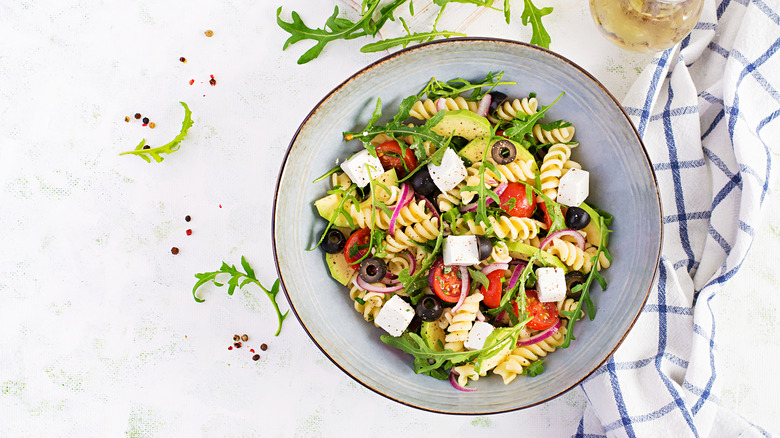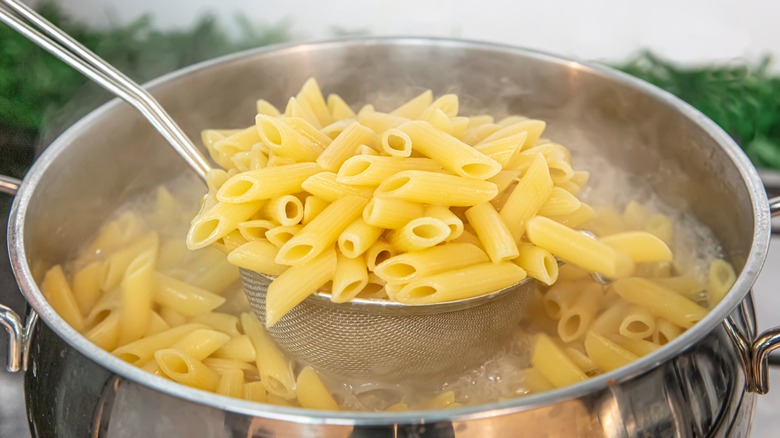The Sure-Fire Way To Avoid Soggy Pasta Salad
Summertime is all about backyard barbecues, picnics, and potlucks, and filling up on lots and lots of tasty and varied food. Besides the staples of burgers, hot dogs, and steaks, sides and salads have pretty crucial supporting roles at these feasting get togethers. There is often an assortment of sides and salads to choose from, but a common staple is the classic pasta salad.
The beauty of pasta salads is how easy they are to make, and that you can make them in advance, so there's no need for any last minute stress. Pasta salads are also incredibly versatile. You can dress them up or down with different ingredients or flavors, like vibrant veggies, fresh herbs, and an assortment of olives, cheeses, and meats. A creamy dressing or a vinaigrette-based one? Or add pickle juice as a secret ingredient to take your pasta salad up a notch? It's all up to you and your palate. For the best results though, don't add butter to your pasta salad. Something else you should avoid? Serving a pasta salad that is a soggy mess. Here's how not to.
It's all in how long you cook your pasta
To avoid a soggy pasta salad that no one wants, you should only cook your pasta until it is just al dente (meaning "to the tooth" in Italian, when the pasta gets to be "firm, chewy, and fork-tender"), recommends Real Simple. How long that is exactly will depend on the type of pasta you are using, so look for the directions on the pasta box. It's best to avoid long noodles and stick with shorter variations that have lots of little nooks and crannies like rotini, penne, and fusilli, to soak up all those delicious flavors in the pasta salad, including the dressing, herbs, and spices, according to The Kitchn.
After your pasta is cooked, be sure to dress the pasta salad while it is still warm. The Kitchn recommends tossing the still-warm pasta salad with two-thirds of the dressing you plan to use and reserving the remainder for just before serving. As the pasta soaks up the dressing, it will soften up a bit further, which is why you want to cook it to just al dente, to leave room for this extra, flavorful softening.

